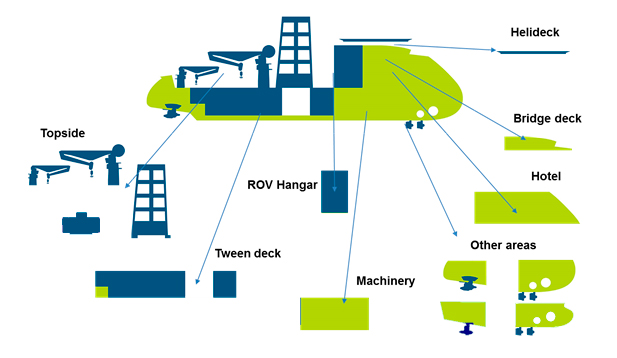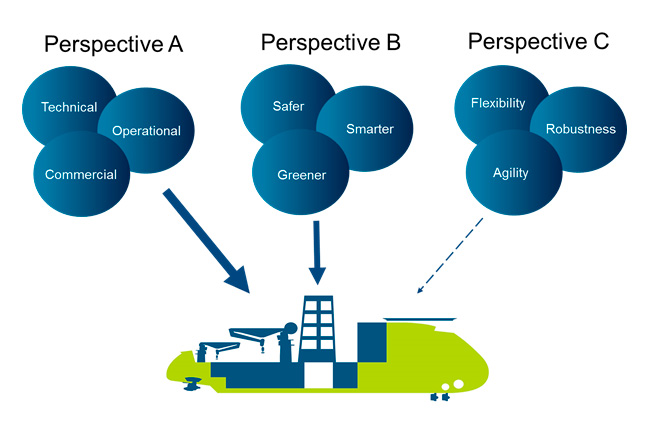What is a better ship?
3 steps can be explored to evaluate the better ship - different vessel performance perspectives of efficiency, effectiveness and efficacy.
Several questions need to be answered in order to define the vessel’s missions: What tasks will the vessel be carrying out, now and over its lifetime? Where to build it? What crew to bring on board? Which fuel to use?
The answers to such questions can vary, and they are all influential factors on the CAPEX (Capital expenditures), OPEX (Operational expenditures) and VOYEX (Voyage related expenditures) profile of the ship in question.

The figure shows the complexity
of an offshore service vessel when split in modules of functionalities and how
many major and critical decisions have to be made about different hull, power
and top-side systems, to finalize a design solution.
Although any valid measures of merit will be based on economics, always other important considerations must be included. Sometimes they cannot be directly expressed in only monetary units of economic analyses. These are intangible influences or factors, which are strictly subjective and usually the prerogative of executives, which need to be measured indirectly or are not measurable at all. Thus, the major decisions are based on a combination of considerations: Quantitative tempered with qualitative intangibles. Recent advances in analytics, availability of Big Data in the public domain and probability theory have changed this situation. Decision-making and uncertainty can be handled by technology.
When it comes to decision-making for the better vessel, traditional intuition does not suffice. Presupposed views can make or break the final value of a solution, and the traditional approaches are weak when handling and catering for multi-dimensional and multi-disciplinary, complex ship designs. More ship design models must include relevant and broader perspectives for establishing proper performance yield evaluations and comparisons.
Three steps in evaluating the ship performance
A set of three different vessel performance perspectives (A, B & C) should
be explored when pursuing the better ship.
Perspective A: Design for efficiency - the degree of being efficient
Perspective B: Design for effectiveness - the degree of success in producing a desired result
Perspective C: Design for efficacy – the degree of versatility

In this way, all relevant stakeholder interests and dialogue are accommodated for. This approach is partly based on the presumption that most influencing factors can be identified, observed and measured.
Finding the vessel solution
The challenge of pinpointing the particular vessel
design solution compared to other previous projects is done in three triangles.